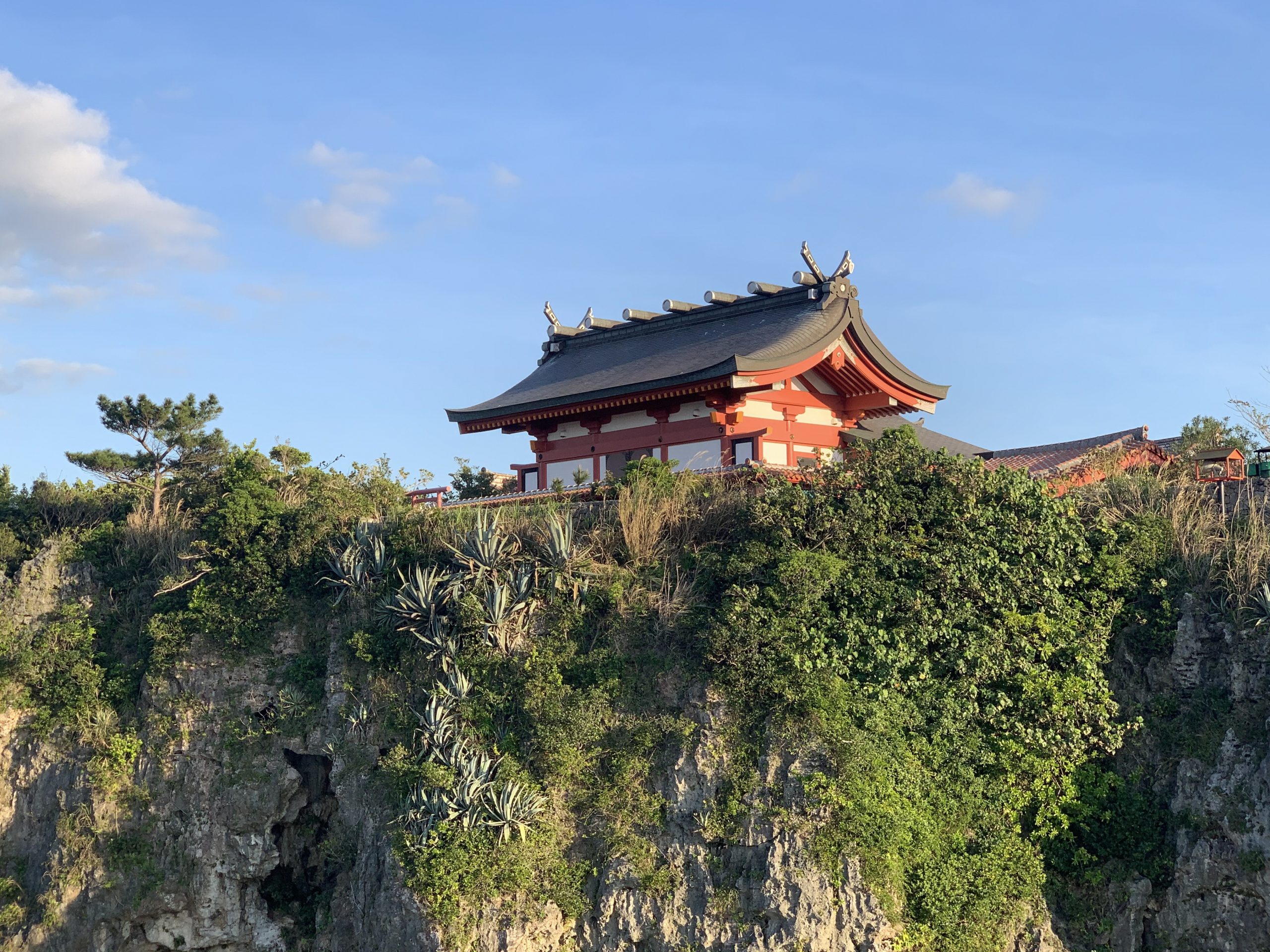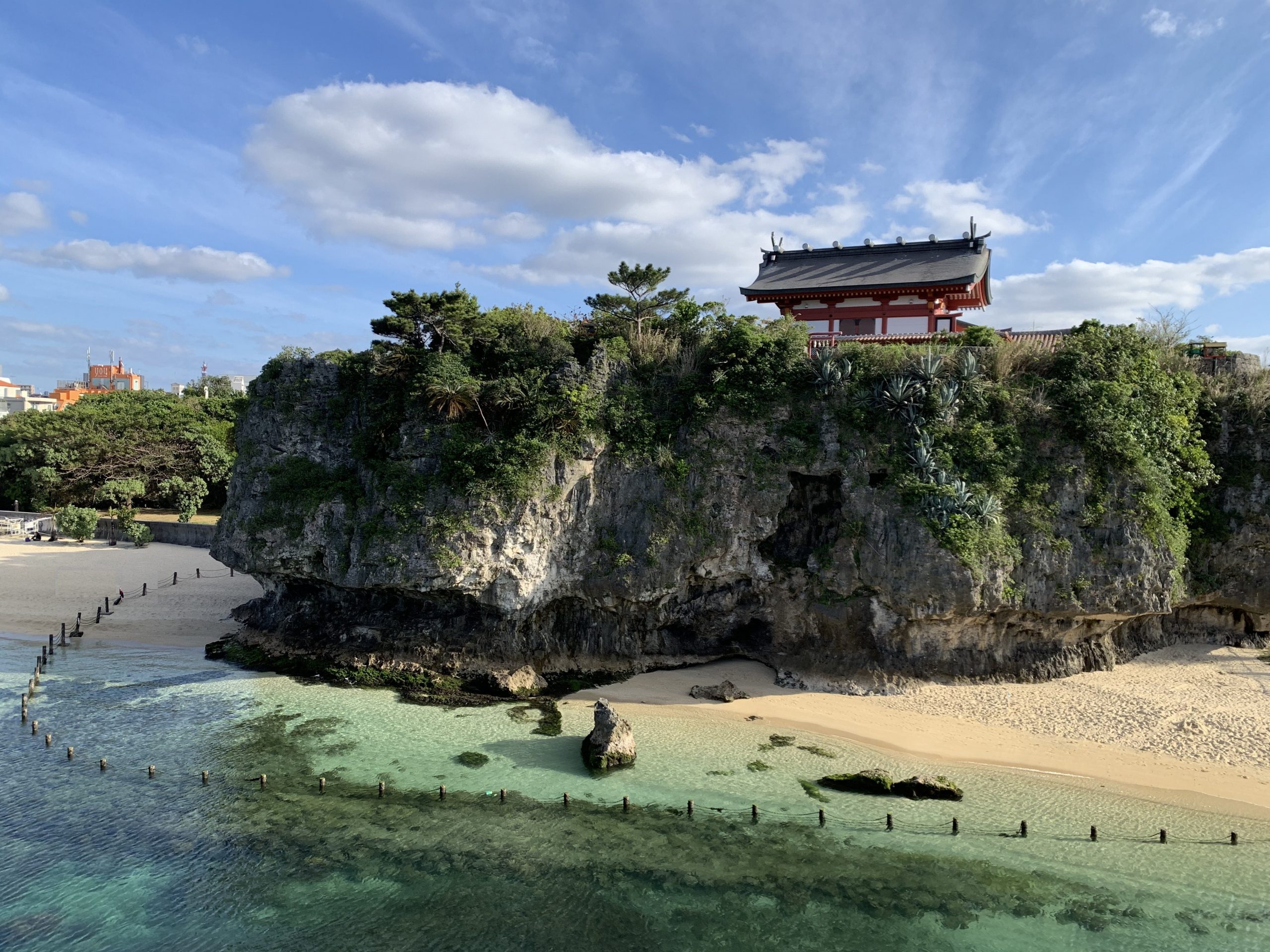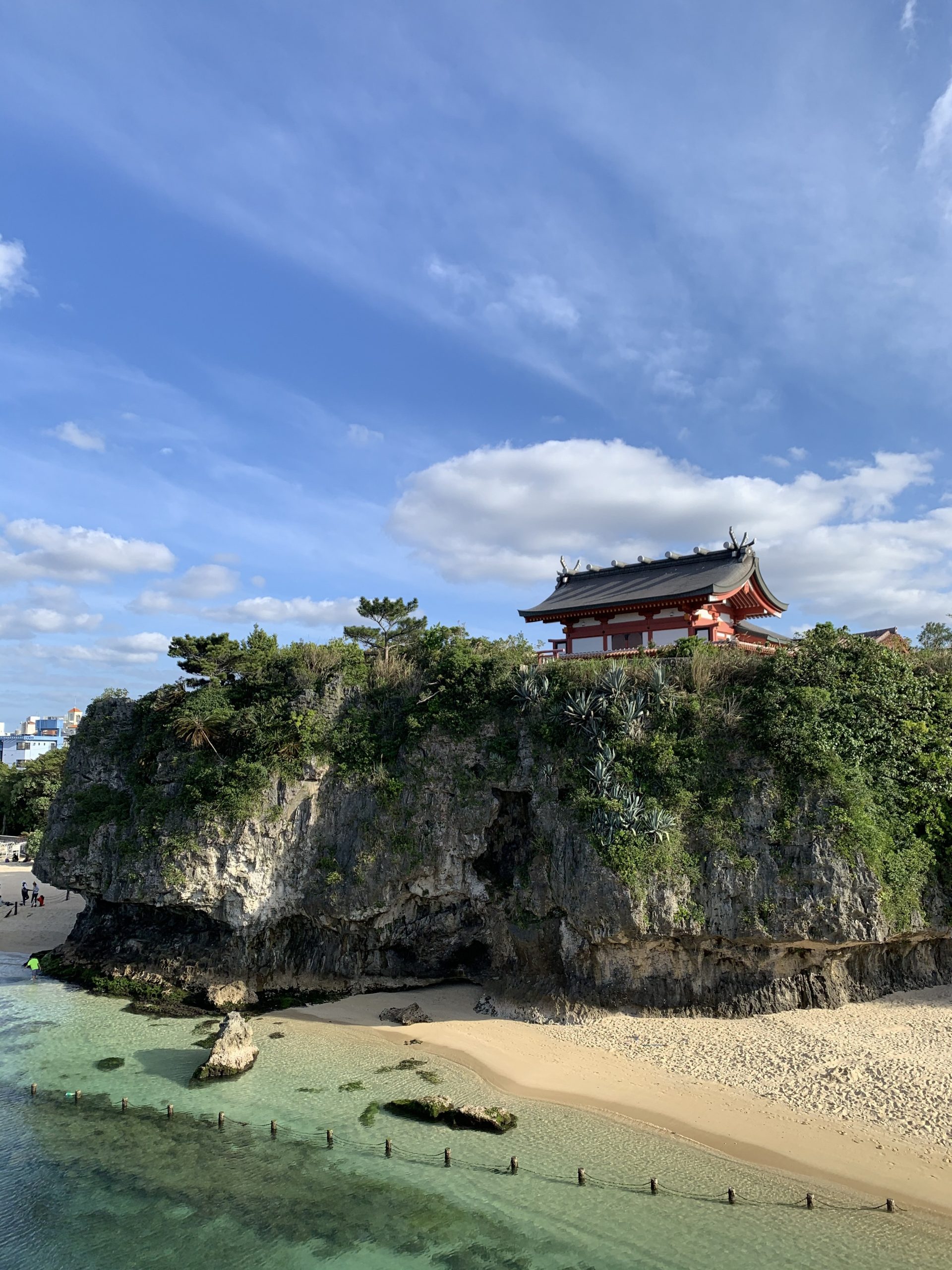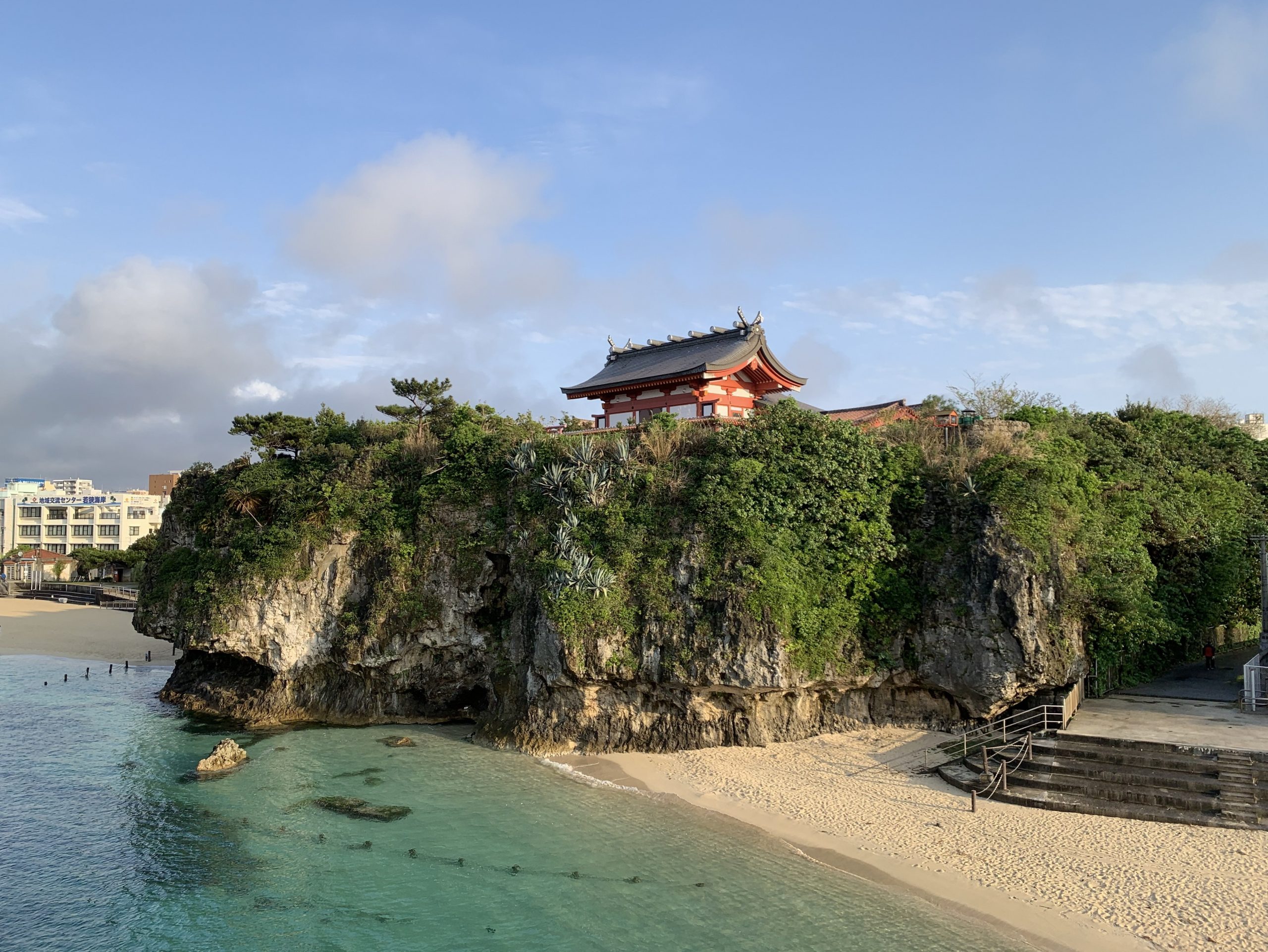Naminoue
Historic sitesHistory





People have worshipped Naminoue and loved it since ancient times because of its wonderful view.
Basic information
- Address
- 900-0031 1-26-3 Wakasa Naha Okinawa
- Business hours
- Nothing in particular
- Close day
- Nothing in particular
- Charge
- Free
- Parking
- None
- Access information
- About 5 minutes by car from Yui Rail Kencho-mae station.
Additional Information
- Academic information
- Cultural property(Municipal designated historical site)
Designated date: October 10th, 2006.
People have worshipped Naminoue and loved it since ancient times because of its wonderful view. The cliff made of Ryukyu limestone which protrudes from the ocean「Naminoue Cave Ruins」was used as a grave from the end of the Okinawa Shell-mound age to the beginning of the Historical age. During the construction of adding to the building to Naminoue, ruins from the late Okinawa Shell-mound age and artifacts dating from the 14th to 16th century were confirmed. This place was written about in a song found in the「Omorosoushi」archive (1531~1623), and the existence of the sun stone and stone walls suggests that it was a religious place long before the Naminoue shrine was built. The origin of Naminoue Shrine for the Gods (Izanagi-no-Mikoto, Kotosaka-no-onomikoto, Hayatama-onomikoto) was described in both the「Ryukyu Shindou Ki」(17th century) and the「Ryukyukoku Yurai Ki」(The Records of the Origin of the Ryukyu Kingdom)(1713), histories along with the nearby Gokoku-ji (place of worship for Amida nyorai, Yakushiji nyorai, and sentekannenon bosatsu), it was an important place for the political activities of the king. Naminoue was known for the great view it commanded and it often appears in the records of the envoys from China (Sappoushi) and in the 「Totenshi Sappou Ryukyu Shinkikan」written by Koshou、who came to Ryukyu with the envoy Tosansaku invited by king Sho Shin in 1633.
Naminoue’s scenic beauty was expressed in a poem titled「Jungai Seikishou」as one of the eight scenic beauties in Ryukyu, in the「Ryukyu Kokushi Ryaku」written by the envoy「Shuukou」who visited in the middle of the 18th century.
In traditional Ryukyu songs, Naminoue was celebrated as a place for moon watching but also as a courting place. Naminoue was heavily damaged during World War II and nothing was left but the Torii gate. Naminoue (and Gokoku-ji) were restored after the war, but the shore-lines around it were rapidly reclaimed and has lost much of its former beauty. - Quote
- Naha Board of Education Cultural Heritage Division (2007) "Naha Cultural Property" Naha Board of Education
